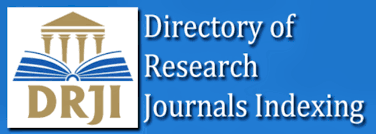Balanced translocations 46, XY, t (8;17)(p23;q11) in brothers with azoospermia
DOI:
https://doi.org/10.30574/gscarr.2021.7.1.0077Keywords:
Azoospermia, Balanced translocation, KaryotypeAbstract
Infertility is one of the most significant human health problems of the reproductive years. The causes of infertility are diverse and numerous-including non-genetic and genetic factors.
A review of this case confirmed this. A balanced translocation was found in two siblings diagnosed with azoospermia. After being unable to conceive, the older brother and his wife had two in vitro fertilization (IVF) failed. At the same time, his younger brother and his wife had one IVF. After the cytogenetic analysis was performed in both pairs, it was shown that the cause of their infertility was the same balanced translocation in the brothers. The female showed a regular (46, XX) karyotype, whereas the male was found to carry balanced reciprocal translocation [46, XY, t(8;17)(p23;q11)].
This case support that cytogenetic analysis is still the first and basic diagnostic analysis of patients with azoospermia and other reproductive problems.
Metrics
References
Zegers-Hochschild F, Adamson GD, Mouzon J, Ishihara O, Mansour R, Nygren K, et al. The International Committee for Monitoring Assisted Reproductive Technology (ICMART) and the World Health Organization (WHO) Revised Glossary on ART Terminology, 2009. Human Reproduction. 2009; 24(11): 2683–2687.
Agarwal A, Mulgund A, Hamada A, Chyatte MR. A unique view on male infertility around the globe. Reprod Biol Endocrinol. 2015; 13: 37.
Mafra FA, Christofolini DM, Bianco B, Gava MM, Glina S, Belangero SI, et al. Chromosomal and molecular abnormalities in a group of Brazilian infertile men with severe oligozoospermia or non-obstructive azoospermia attending an infertility service. International braz j urol. 2011; 37(2): 244-251.
Zhang H, Wang R, Yu Y, Zhu H, Li L, Yang X, et al. Non-Robertsonian translocations involving chromosomes 13, 14, or 15 in male infertility: 28 cases and a review of the literature. Medicine. 2019; 98(9): e14730.
Goossens, E, Tournaye H. Spermatogenesis. In: Yanagimachi R, De Jonge C, Barratt C, editors. The Sperm Cell: Production, Maturation, Fertilization, Regeneration. Cambridge: Cambridge University Press. 2017; 1-20.
Ghazaey S, Keify F, Mirzaei F, Maleki M, Tootian S, Ahadian M, et al. Chromosomal analysis of couples with repeated spontaneous abortions in northeastern Iran. International journal of fertility & sterility. 2015; 9(1): 47–54.
Al-Ashi S, Sharif F. Familial reciprocal translocation t(8;17)(p23;q21) in a woman with recurrent spontaneous abortion. Int J Reprod Contracept Obstet Gynecol. 2013 Dec; 2(4): 695-697.
Zorrilla M, Yatsenko A. The genetics of infertility: Current status of the field. Curr Genet Med Rep. 2013; 1(4).
Zhang HG, Liu XY, Hou Y, Chen S, Deng S, Liu RZ. Reproductive outcome of a case with familial balanced translocation t(3;6): implications for genetic counseling. Genet Mol Res. 2015; 14(1): 2809-15.
Scriven PN, Flinter FA, Khalaf Y, Lashwood A, Mackie Ogilvie C. Benefits and drawbacks of preimplantation genetic diagnosis (PGD) for reciprocal translocations: lessons from a prospective cohort study. Eur J Hum Genet. 2013; 21(10): 1035‐1041.
Downloads
Published
How to Cite
Issue
Section
License
Copyright (c) 2021 Mirela Mačkić-Đurović, Nejla Đikić, Dunja Rukavina

This work is licensed under a Creative Commons Attribution-NonCommercial-ShareAlike 4.0 International License.












